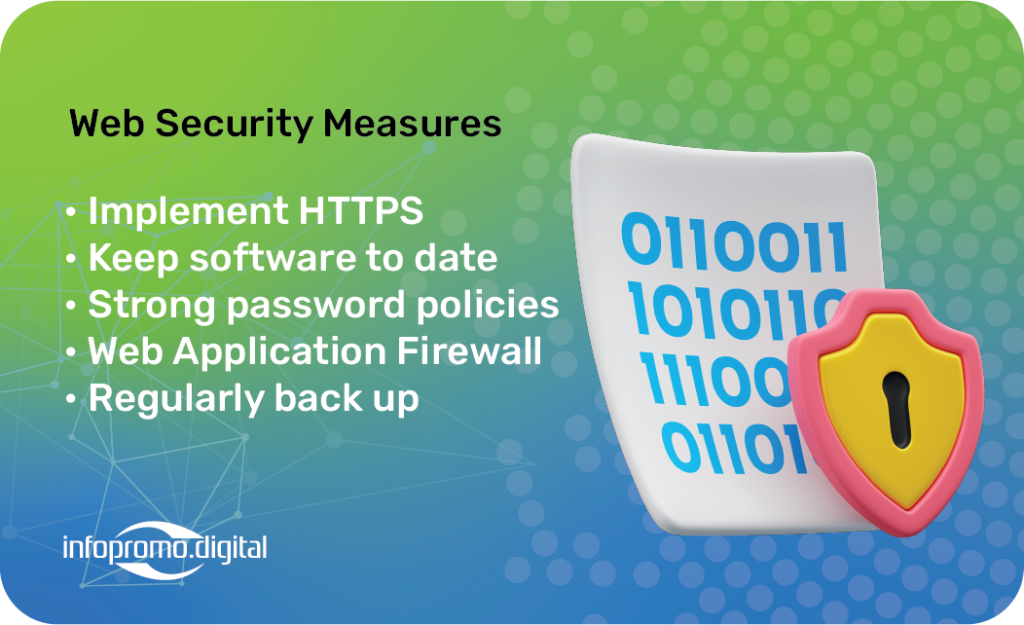
In today’s digital landscape, ensuring the security of your website is paramount. With cyber threats and data breaches becoming increasingly sophisticated, it is crucial to implement robust security measures to protect your website and its users. This blog outlines essential security features and practices to safeguard your website against potential threats.

1. Use HTTPS: One of the most fundamental steps in securing your website is implementing HTTPS. This protocol encrypts the data exchanged between the user’s browser and your website, protecting sensitive information from interception by malicious actors. Search engines also favor HTTPS websites, boosting your site’s SEO performance.
2. Regular Software Updates: Keeping your website’s software, including CMS, plugins, and themes, up to date is critical. Outdated software often contains vulnerabilities that hackers can exploit. Regular updates ensure that security patches are applied, reducing the risk of breaches.
3. Strong Password Policies: Implementing strong password policies for all user accounts is a basic yet effective security measure. Encourage the use of complex passwords and consider incorporating multi-factor authentication (MFA) for an added layer of security.
4. Web Application Firewall (WAF): A Web Application Firewall (WAF) acts as a shield between your website and potential threats. It monitors and filters out malicious traffic, preventing attacks such as SQL injections, cross-site scripting (XSS), and other common exploits. A WAF enhances your website’s security by providing real-time protection.
5. Regular Backups: Regularly backing up your website ensures that you can quickly recover in the event of a security breach or data loss. Store backups in secure, offsite locations and test them periodically to ensure they can be restored effectively.
6. Secure Hosting Environment: Choosing a reputable web hosting provider is crucial for your website’s security. Ensure that your hosting environment offers robust security features such as firewalls, malware scanning, and DDoS protection. A secure hosting environment is the foundation of a safe website.

7. Monitor and Analyze Traffic: Regularly monitoring your website’s traffic can help identify unusual patterns that may indicate a security threat. Utilize tools like Google Analytics and security plugins to analyze traffic and detect potential issues early.
8. Limit User Access: Restricting user access to essential personnel only minimizes the risk of accidental or intentional security breaches. Implement role-based access controls (RBAC) to ensure that users have access only to the information and functions necessary for their role.
9. Secure File Uploads: Allowing users to upload files to your website can introduce security risks. Implement safeguards such as file type restrictions, virus scanning, and secure storage locations to mitigate these risks.
10. Educate Your Team: A well-informed team is your first line of defense against cyber threats. Provide regular training on security best practices and encourage a security-conscious culture within your organization.
Conclusion: By implementing these top security measures, you can significantly enhance the protection of your website against cyber threats and data breaches. Staying vigilant and proactive in your security efforts will ensure that your website remains a safe and trusted platform for your users.




